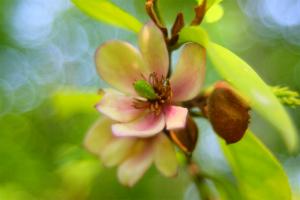How to Feed Potted Plants
Potted plants are a great way to add some greenery to your home or office. They not only look beautiful, but they also provide a host of benefits such as purifying the air and improving your mood. However, in order to keep your potted plants healthy and thriving, it's important to feed them. Here are some tips on how to feed potted plants.
Choose the Right Fertilizer
When it comes to feeding potted plants, the first thing you need to do is choose the right fertilizer. There are many different types of fertilizers on the market, so it's important to choose one that is specifically designed for potted plants. Look for a fertilizer that has a balanced ratio of nitrogen, phosphorus, and potassium, as well as trace minerals like iron, magnesium, and calcium. Avoid fertilizers that are high in salt, as they can damage your plants over time.
Use the Correct Amount
Once you have chosen the right fertilizer, it's important to use the correct amount. Be sure to read the label carefully and follow the instructions. It's better to under-fertilize than over-fertilize, as too much fertilizer can burn your plants and cause them to wilt or die. As a general rule, feed your potted plants once a month during the growing season (spring and summer) and once every two months during the dormant season (fall and winter).
Apply Fertilizer Properly
When applying fertilizer to your potted plants, there are a few things to keep in mind. First, be sure to water your plants thoroughly before applying fertilizer. This will help the fertilizer to be absorbed more easily by the roots. Second, apply the fertilizer evenly over the top of the soil, taking care not to get any on the leaves or stem. Finally, be sure to water your plants again after applying the fertilizer to help it soak into the soil.
Watch for Signs of Over-Fertilization
Even if you follow all of these tips, it's still possible to over-fertilize your potted plants. Watch for signs of over-fertilization such as yellowing or browning leaves, stunted growth, or a fertilizer burn on the tips of the leaves. If you notice any of these signs, stop fertilizing your plants and flush the soil with plenty of water to help remove excess fertilizer.
Conclusion
Feeding your potted plants is an important part of keeping them healthy and thriving. By choosing the right fertilizer, using the correct amount, applying it properly, and watching for signs of over-fertilization, you can enjoy beautiful and healthy potted plants in your home or office.

 how many times do yo...
how many times do yo... how many planted tre...
how many planted tre... how many pine trees ...
how many pine trees ... how many pecan trees...
how many pecan trees... how many plants comp...
how many plants comp... how many plants can ...
how many plants can ... how many plants and ...
how many plants and ... how many pepper plan...
how many pepper plan...





























